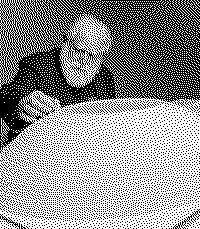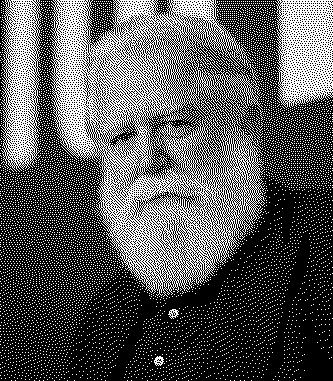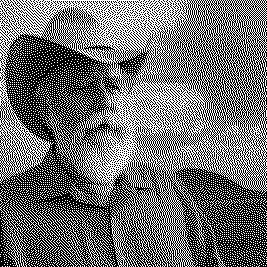Artists/James Turrell
Fast Facts
Psychology and Perception
Turrell studied psychology and mathematics at Pomona College. His understanding of perceptual psychology, particularly the way humans perceive light and color, plays a central role in his art.
Skyscapes
Turrell is famous for his Skyspaces—enclosed rooms with an opening in the ceiling to view the sky. These spaces are designed to alter the viewer's perception of the sky.
Light Projections and Installations
Turrell's early work involved projecting light onto walls and corners in dark rooms, creating the illusion of solid geometry.
Roden Crater Project
Perhaps his most ambitious project, Roden Crater is an extinct volcano in Arizona that Turrell has been transforming into a massive naked-eye observatory since the 1970s. This ongoing project is a culmination of his lifelong fascination with light and space.
Biography



James Turrell, born in Los Angeles in 1943 into a Quaker family, is an American artist renowned for his profound work with light and space, significantly contributing to the Light and Space movement.
From a young age, Turrell's Quaker upbringing instilled in him a fascination with light, an interest further nurtured by his experiences flying U2 planes in his teens, which exposed him to extraordinary meteorological phenomena and shifts in perception due to high altitudes.
Turrell's journey as an artist began at Pomona College, where he majored in psychology while nurturing a keen interest in art history, particularly the works of Mark Rothko. Disappointed by the lack of glow in Rothko's original works compared to their projected images, Turrell was inspired to explore light as a medium. This led him to rent space in the abandoned Santa Monica Hotel, transforming it into a studio where he experimented with architectural, natural, and projected light to create his early Projection Pieces. These works laid the foundation for his career and established him as a leading figure in the Light and Space Movement, alongside contemporaries like Robert Irwin.
One of Turrell's most ambitious projects is the Roden Crater Project, initiated in 1977. Located in an extinct volcano near Flagstaff, Arizona, Turrell has been transforming the crater into a massive naked-eye observatory designed to connect visitors with celestial phenomena. The project reflects his interest in modifying perception through light and his dedication to creating spaces that facilitate a direct engagement with the cosmos.
In addition to the Roden Crater, Turrell has created numerous "Skyspaces" – enclosed rooms with an aperture in the roof through which viewers can observe the sky. These works, which began in the 1970s, exemplify Turrell's interest in celestial observation and his use of light to alter spatial perception. Among these, the "Twilight Epiphany" Skyspace, designed for Rice University, showcases Turrell's ability to enhance natural light at twilight, offering viewers a contemplative space to experience the interplay of light and architecture.
Turrell's career spans decades of exploration and innovation in art, employing light to challenge and expand our perceptions of space and the natural world. His works invite viewers to engage deeply with light and its effects, encouraging a meditative and often profound experience of the familiar turned extraordinary (Wikipedia) (The Art Story).
Importance
James Turrell's significance in the realm of contemporary art and beyond can be encapsulated through his pioneering contributions, transformative projects, and the profound influence he wields over the aesthetic and philosophical underpinnings of art today:
Revolutionizing the Use of Light and Space
Turrell is acclaimed for his innovative use of light and space, inviting viewers into immersive environments that challenge and expand our perceptions of both. Through his work, Turrell transforms light from a mere illuminative force into a palpable material, offering new ways to experience and interpret space and the ethereal qualities of light itself.
Creating Experiential Art
His art transcends traditional visual experiences, offering immersive environments that engage viewers in a profound exploration of perception and the sensory experience. Turrell’s Skyspaces and other installations are not just to be seen but experienced, emphasizing the participatory role of the viewer in creating the meaning of the work (The Art Story).
Interdisciplinary Approach
Turrell's work sits at the intersection of art, science, architecture, and astronomy, demonstrating a comprehensive approach that breaks down the barriers between disciplines. His projects, especially the Roden Crater, underscore his ability to collaborate across fields to create art that contributes to knowledge and understanding beyond the art world (Encyclopedia Britannica).
Influencing Art and Cultural Dialogues
Through his explorations of light and perception, Turrell has contributed significantly to discussions on how we understand and interact with the fundamental elements that shape our world. His installations often provoke contemplation on the nature of human consciousness, perception, and our place within the universe (Wikipedia) (The Art Story).
Pioneering the Light and Space Movement
As a leading figure in the Light and Space movement, Turrell has been instrumental in defining this direction in contemporary art, emphasizing the immersive and experiential potential of artwork. This movement has broadened the scope of what art can be and how it can affect viewers, marking a significant shift in the landscape of contemporary art (The Art Story).
Sustained Influence and Recognition
Turrell's work has been widely recognized and celebrated, with installations and exhibitions around the globe. His ability to draw attention to the subtle nuances of perception and to create spaces that offer a meditative or transformative experience speaks to his lasting impact on both the art world and the public imagination (The Art Story) (Encyclopedia Britannica).
Technique
James Turrell's artistic technique can be detailed through his distinct approach to creating spaces and experiences that focus on the interplay of light and perception:
Manipulation of Light and Space
Central to Turrell's work is his ability to manipulate light and space in such a way that it alters the viewer's perception. By carefully controlling the light within a space, Turrell transforms empty rooms into experiences filled with color and form, making the immaterial material and perceptible (The Art Story) (Encyclopedia Britannica).
Creation of Skyspaces
Turrell's Skyspaces are enclosed viewing chambers with an aperture in the roof that opens directly to the sky. These spaces are designed to encourage viewers to observe the sky in a framed manner, altering perceptions of light and sky color throughout the day and creating a unique celestial experience (Wikipedia) (The Art Story).
Use of Ganzfeld Effect
In some of his installations, Turrell employs the Ganzfeld effect—a perceptual phenomenon that occurs in an environment of unstructured, uniform stimulation, which can lead to heightened sensitivity to light and color and sometimes hallucinatory experiences. This technique challenges the viewer's depth perception and sense of space (The Art Story).
Integration of Architecture and Environmental Elements
Turrell's works often integrate architectural elements and the natural environment, blurring the lines between the built structure and the surrounding landscape. This integration is most famously exemplified by his ongoing Roden Crater project, where the natural form of an extinct volcano is transformed into an observatory for celestial phenomena (The Art Story) (Encyclopedia Britannica).
Employment of Perceptual Cells
Turrell's Perceptual Cells are immersive installations designed for a single viewer. These works isolate the viewer in a controlled environment where light and sound (or the absence of it) play with the senses, creating deeply personal experiences of space and perception (The Art Story).
Collaboration Across Disciplines
Turrell's work demonstrates a deep collaboration across various disciplines, including art, science, architecture, and astronomy. By engaging with experts from different fields, Turrell ensures that his installations are not only artistically profound but also scientifically and technically sophisticated, allowing for precise manipulations of light and space (Encyclopedia Britannica).
Engagement with Celestial Themes
Many of Turrell's works, including the Roden Crater project, engage directly with celestial themes, aiming to bring the sky and celestial phenomena closer to the viewer. Through carefully designed apertures and viewing platforms, Turrell allows viewers to experience the movements of celestial bodies in a more intimate and profound way (The Art Story) (Encyclopedia Britannica).










